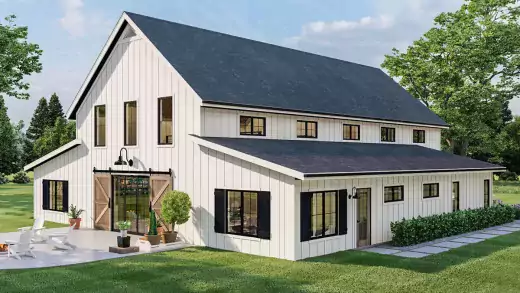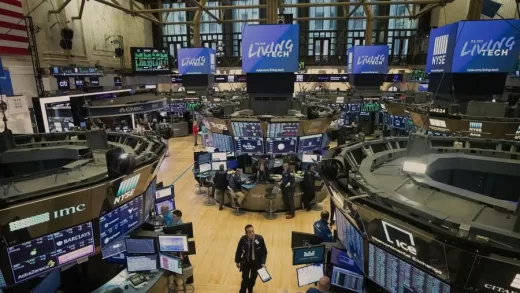The trend of barndominiums, or “barndos” for short, is on the rise across the United States. These spacious, customizable homes that combine the rustic charm of a barn with the comforts of a traditional home are becoming a popular choice for homeowners seeking a unique, versatile living space. But how much does it cost to build a barndominium? That’s a question we’ll explore in depth in this guide.
Understanding Barndominium Costs
The cost of building a barndominium can vary greatly depending on several factors, including the location and condition of the land, the size and design of the barndo, and the materials and custom features you choose to include. As with any home construction project, it’s essential to plan carefully and consider all potential costs to avoid surprises down the line.
Location and Land Costs
Buying the Lot
The cost of the land for your barndominium is the first significant expense you’ll need to consider. Land prices can vary greatly depending on the location, size, and features of the lot. For example, a lot in a desirable neighborhood or near a city center will likely cost more than a similar-sized lot in a rural area.
Moreover, if you’re considering building in a subdivision, it’s important to make sure the homeowner’s association allows barndominiums. Some associations have strict rules about the types of homes that can be built in the neighborhood, so it’s crucial to do your research and ensure your barndo plans will be accepted.
Site Prep and Utility Hook Ups
Once you’ve purchased your lot, there will be additional costs associated with preparing the site for construction and hooking up utilities. This may include the cost of digging a well or installing a septic system if public water and sewer services aren’t available.
Access to high-speed internet, running power lines or burying them, the length of the driveway to the main road, and the work involved in leveling and grading the lot all factor into the overall cost of site prep. These costs can add up, especially if your lot is in a remote location or if it requires significant work to make it suitable for construction.
Basic Costs of Building a Barndominium
Size and Design
The size of your barndominium will largely dictate the cost of building it. The larger the size in square footage, the higher the cost will be. It’s not just the floor space that counts, but also the ceiling height and the extent of indoor and outdoor spaces.
For instance, a barndominium with a higher ceiling will require more materials and labor for its construction, thereby increasing costs. Likewise, adding outdoor spaces such as patios, porches, or decks will also add to the total cost.
The cost per square foot for a barndominium can range, but will generally land around $60-$150 per square foot. You can save a substantial amount of money if you opt to general contract the build yourself, versus paying a contractor. Note, being your own general contractor comes with some risks, and should only be done by people who feel very confident and comfortable with the building process, and who have access to all of the required sub-contractors.
Materials
The choice of materials for your barndominium will significantly impact the overall cost. For instance, choosing a post frame construction method could lower costs due to its simplicity and speed of construction. The exterior finishes you choose, such as brick or stucco, can also affect the cost, with brick often being more expensive than stucco. Most chose sheet metal siding for their barndominium, with light brick or stone accents.
As for the interior, choices in flooring, such as hardwood vs. carpet, can cause a difference in cost. Adding amenities like heated floors can drive up the cost further.
Customization
Customization is another area that can significantly influence the cost of building a barndominium. High-end interior finishes like quartz countertops, custom cabinetry, and premium appliances will raise the cost compared to more standard or budget-friendly choices. The same goes for the exterior, where premium finishes and landscaping can add up.
Deciding how much of the garage or barn space to finish or rough in can also impact the cost. Some owners may choose to leave some areas unfinished to reduce costs and allow for future customization.
Cost-saving Tips When Building a Barndominium
Building a barndominium can be a cost-effective way to achieve a spacious and versatile home, especially if you keep some key cost-saving strategies in mind. Here are some practical tips to save money during the building process:
- Choose a Simple Design: Complex designs require more materials and labor, which can significantly increase costs. Opt for a simpler design to save money.
- Do It Yourself: If you have construction skills, doing some of the work yourself can result in significant savings. However, ensure you are capable and have the necessary skills to maintain quality and safety.
- Source Materials Yourself: You can often find better deals on materials by sourcing them yourself rather than going through a builder or contractor. Look for discounted or reclaimed materials for additional savings.
- Plan for Efficiency: Design your barndominium with energy efficiency in mind to save on long-term costs. This could include proper insulation, energy-efficient appliances, and solar panels.
- Time Your Build Right: Building during the off-peak season can result in lower costs as builders and contractors often lower their prices during slower times of the year.
Financing Your Barndominium
Financing a barndominium can be more complex than financing a traditional home. Here are some common financing options:
- Mortgage Loans: Some lenders may offer conventional mortgage loans for barndominiums, although they might require a larger down payment and have higher interest rates due to the perceived risk associated with non-traditional homes.
- Construction Loans: These are short-term loans that cover the cost of building the home. Once construction is complete, you typically must refinance the construction loan into a permanent mortgage.
- Home Equity Loans: If you already own property, a home equity loan might be an option. This type of loan uses the equity in your current home as collateral.
- Personal Loans: Personal loans can be used for smaller projects or for supplementing other types of financing. They typically have higher interest rates and shorter repayment terms than mortgage loans.
Finding a lender willing to provide a loan for a non-traditional home can be challenging, and many see higher interest rates due to perceived risk. Potential issues with meeting building code and zoning requirements that can affect a lender’s willingness to provide financing. It’s also worth noting that some lenders might not consider the future value of a completed barndominium, which could limit the amount you’re able to borrow.
Some of the top lenders for barndominium financing are New Century Bank and First Federal Bank of Kansas City. However, your best bet is always to go and talk to a local lender at a bank, as they are most likely to be able to help you. A new barndominium build is usually done in two transactions, with the initial building loan being completed as a construction loan, which is then later refinanced into a fixed mortgage loan.



